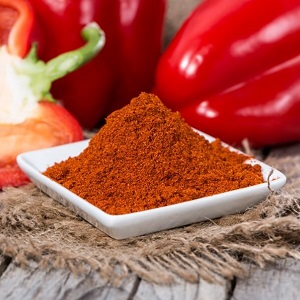- No. 268 Xianghe Street, Economic Development Zone of Xingtai city, Hebei 054001 China
- Byron@hbhongri.cn
homemade paprika
Homemade Paprika A Flavorful Adventure
Paprika is more than just a spice; it’s a vibrant burst of flavor and color that can transform any dish. While store-bought paprika is readily available, making your own homemade paprika allows you to control the quality of ingredients and customize the flavor to your liking. This culinary adventure not only enhances your cooking experience but also connects you more deeply to the art of seasoning. Let's explore how to create your own paprika at home, from sourcing the right peppers to the final grind.
Understanding Paprika
Paprika is primarily made from ground, dried red peppers. Its flavor can range from sweet to smoky to hot, depending on the type of pepper used. The most common varieties include Bell Peppers, Sweet Peppers, and certain types of Chile Peppers such as Anaheim or Pimento. By making paprika at home, you can choose your preferred pepper variety and thus influence the flavor profile of your spice.
Choosing Your Peppers
The first step in making homemade paprika is selecting the right peppers. If you prefer a sweeter flavor, look for sweet varieties like Hungarian or Spanish peppers. For a smoky paprika, try using smoked peppers, such as those found in traditional Spanish cuisine. If you enjoy heat, consider incorporating spicier varieties, but be cautious; a little can go a long way! You can even experiment by mixing different types for a unique blend.
Drying the Peppers
Once you've selected your peppers, the next step is drying them. You can air-dry, use an oven, or a dehydrator to remove moisture. Air-drying involves hanging the peppers in a cool, dry place for several days until they are completely dry. If using an oven, set it to the lowest temperature and place the peppers on a baking sheet. Keep the door slightly ajar to allow moisture to escape. It typically takes several hours for the peppers to dry completely when using the oven method. Once dried, the peppers should be brittle and feel light.
homemade paprika

Grinding the Dried Peppers
After your peppers are fully dried, it’s time to turn them into powder. Use a spice grinder, mortar and pestle, or a high-quality blender to grind the dried peppers to your desired consistency. For a finer powder, grind longer, but be cautious not to overheat the spice, as it may lose flavor. The freshly ground paprika will have a robust color and aroma that store-bought varieties often lack.
Storing Your Homemade Paprika
Once ground, store your homemade paprika in an airtight container away from direct sunlight. A glass jar with a tight-sealing lid or a cool, dark cupboard works well. It's best to consume your homemade paprika within six months to ensure maximum freshness and flavor. Label your containers with the date and type of paprika, so you can easily keep track of your spices.
Uses of Homemade Paprika
Homemade paprika can enhance a variety of dishes. Sprinkle it on roasted vegetables, incorporate it into stews, or use it to season meats. It’s also delightful in marinades and salad dressings, adding depth and warmth. If you're feeling adventurous, try making a traditional dish like Hungarian Goulash or Spanish Paella, which heavily relies on the rich flavor of paprika.
Conclusion
Creating homemade paprika is a rewarding experience that allows you to experiment with flavors and enhance your culinary creations. The vibrant color and rich aroma of freshly ground paprika will elevate your dishes far beyond what store-bought versions can offer. So gather your peppers and embark on this flavorful journey; your taste buds will thank you!
-
Turmeric Rhizome Powder: A Golden Treasure from Roots to TableNewsJul.28,2025
-
The Versatile Application Of Crushed Red Hot Peppers: Lighting Up The Red Flames On The Dining TableNewsJul.28,2025
-
The Paprika: A Touch Of Vibrant Red In Color, Flavor, And CultureNewsJul.28,2025
-
Ground Turmeric: A Modern Examination of an Ancient SpiceNewsJul.28,2025
-
Capsicum Liquid Extract: Features, Applications, and ChallengesNewsJul.28,2025
-
Application of Capsicum Liquid Extract in FoodNewsJul.28,2025







